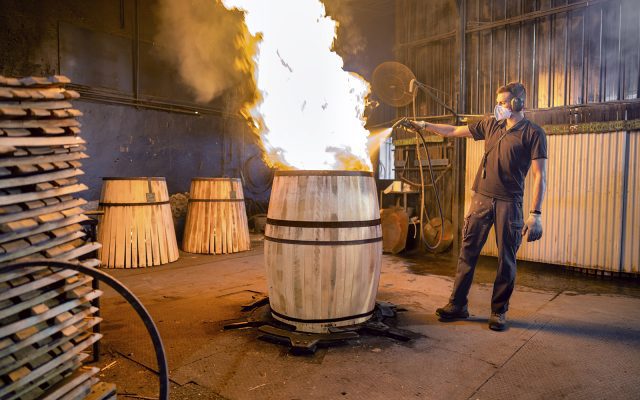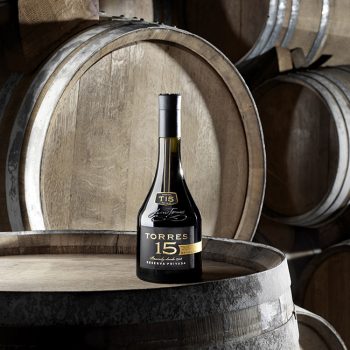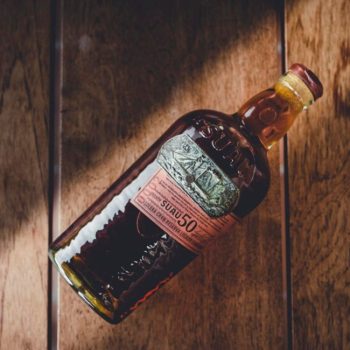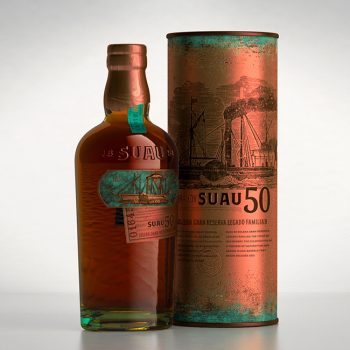Brandy gets a makeover
By Rupert HohwielerWith slow sales and a reputation for being a drink for older consumers, Spain’s brandy producers are refreshing their ideas.

*This feature was originally published in the May 2024 issue of The Spirits Business magazine.
As other brown spirits categories, such as whisky and Cognac, delve deeper into innovation and look for ways to attract younger, let’s say, more modern consumers, there is a fear that the often staunchly traditional brandy sector may get left behind.
Brandy is a spirit that while greatly proud of its heritage, arguably hasn’t always been on the front foot in terms of marketing efforts, and has in the past carried a reputation for being unfashionable.
Spain is one of the world’s oldest producers of brandy, with a history that dates back to the Middle Ages. According to IWSR Drinks Market Analysis data, it accounted for 6% of global consumption of the spirit in 2022, and Spanish brandy volume sales are set to grow by a compound annual growth rate (CAGR) of 3% from 2022-2027, after a 30% rise in 2022.
Growth, however, has declined in Mexico (down 8% CAGR) and Spain (down 3%) from 2017 to 2022, two of the three main markets for Spanish brandy, after the Philippines.
Premium and above
For Spanish brandy in premium-and-above price segments, in terms of 2022 volume, Spain is the third-largest market behind Russia and Germany. Dan Mettyear, IWSR research director, EMEA, says that in Spain there’s a “lack of recruitment, and a gradually fading consumer base has consigned what was once a major local category to long-term decline”.

There’s nothing too damning, or too concerning for Spain’s brandy producers just yet, though, says Christian Visalli, global spirits director at Familia Torres, Spain’s biggest-selling brandy producer. But it is something to be aware of. “Generally speaking, brandy is still the third most important category in terms of volume in the spirits industry globally, if you look at the IWSR numbers,” he says. “It has been quite stable in slowly declining over the past year, mostly for volume, rather than value. Right now, the category has a very big challenge, which is keeping the traditional consumers, who tend to be 50-plus years, mostly male (that’s what the traditional consumption looks like), and it’s also been struggling to recruit new, younger generations.”
Having spoken to producers in Spain, of different sizes and resources, all seem to be united on how to keep brandy moving and pull away from the ‘old man’ stereotype that purveys the category, without actually losing the ‘old men’.
For one, with the interest in cocktails that is taking over the drinks industry, brandy can have a place in many people’s favourite serves – especially in classic cocktails. Visalli says brands can take advantage of the renewed sense of classic cocktails coming from the high-end scene: “When you look at Jerry Thomas’ Bartenders Guide and the history of cocktail making, there are a lot of cocktails that had a brandy base at the time.” He adds that Torres has received “very nice” feedback from bartenders it has worked with. “We believe in offering the consumer an interesting way of trying our brandy.”
Moreover, the interest in Sangria in the US is also advantageous, as while the cocktail is made with wine and fruit in Spain, in the US it’s commonly made with brandy. Jordi Xifra Keysper, the North America sales manager for Beveland Distillers, a mid-sized brandy producer located in Mallorca, says Sangria plays an important part in brandy Suau 50’s business in the country as well, especially in the south where there is a large Hispanic population. “In 2023, we were able to enter big chains like ABC in Florida, and we have talked with big chains in Texas and California too. It helps a lot when you go to an account and they have Sangria on the cocktail menu.”
Moreover, Mónica Calvo, the global brand manager at Grupo Osborne – one of Spain’s oldest producers, founded in 1772 – highlights the versatility of brandy as a big plus in the efforts to become noticed in the bar world. “Mixology is a huge trend that is now being adopted by most brands in the category,” she says. “It is the perfect base for preparing not just traditional cocktail drinks but also more elaborate ones. In Osborne, and especially with Carlos I Brandy de Jerez, we are working with bartenders both nationally and internationally, to help push this trend and drive ‘liquid to lips’.”

In countries such as the US, which has less of a loyal consumer base for brandy than Spain and Mexico, and therefore tends to be more willing to try new things, innovation provides plenty of room for growth.
Albert Alonso Cuni, the global marketing manager for spirits for González Byass, based in Jerez, says that the company’s US drivers “focus on market alternatives that awaken interest in the category”.
Suau 50 produces an orange brandy liqueur, which is the brand’s best seller. Keysper says this helps it to complement other categories: “We can compete with brandies, but we also compete with cordials or orange liqueurs with a brandy base – Grand Marnier, Cointreau, and Gran Gala from Sazerac, which has an Italian brandy base.”
Something new
For Torres, Visalli says that the company is developing concepts such as the ‘barrel series’, which he says is an “opportunity to offer the consumer something new and get some attention”. Last year, Torres introduced its first smoked brandy, Torres 10 Years Old Smoked Barrel – made with its flagship 10-year-old brandy, and aged in vintage American oak casks. This year, the company plans to launch a brandy that is finished in Bourbon barrels.
In addition, Osborne’s Calvo points to premium products and their rise in demand from customers, as another avenue that brands can target to boost sales. She says Spanish brandy’s “special organoleptic characteristics” have helped to separate it from other premium spirits, and that the company will focus on its premium portfolio (Carlos I and Brandy 1866) to drive growth. “We are focused on strategically growing two fantastic premium brandy brands that each offer something unique to varied consumer profiles,” she says. Last year, Osborne released its Carlos I Legacy Collection, a Brandy de Jerez that master blender Marcos Alguacil made through a combination of San Bartolomé Sherry casks and a selection of Carlos I soleras from the Osborne family reserve. These are the kind of ultra-premium, limited edition releases that can reel in young consumers, the company believes.

There’s nothing wrong with jumping on the back of some of the other categories and their popularity either. Keysper sees the Tequila trend in the US as a good thing for Suau 50. “For the Cinco de Mayo [5 May] celebrations, we’re trying to capture a little bit of the Tequila cake with the orange brandy liqueur, and then, from there, we’ll try to shine a light on the rest of the range,” he explains.
Visalli adds that the success of Cognac, Armagnac, and other grape-based spirits can only benefit Spanish brandy: “We don’t see it as a threat; hopefully there will be more brands building awareness for grape-based spirits.”
But among all the excitement that experimentation and special releases can bring, producers don’t want to lose sight of what the category is all about. “When we launch the Bourbon-finished brandy, we don’t want to lose transmitting where the brandy comes from, and when we look at what can be appealing for younger consumers, brandy has a very noble origin,” Visalli explains.
“The different thing for me is that we always had a link with our tradition and how to make Spanish brandy, which is very much linked to the land and grape, but also the ageing method is one of the most iconic ways of ageing. We marry the solera system with the concept of finishing in a different cask. It’s a way of presenting something traditional, but with a twist or novelty.”
Products with soul
Cuni of González Byass shares a similar line of thinking, and says while getting across a product’s legitimacy can be a challenge, the “imagery” of Spanish brandy is something that appeals to younger drinkers. “There is an important cluster of consumers that appreciate products with soul, with a story to be told, and not just another mass-market spirit produced without any anchor to their origins or their territory,” he says.
So how can producers get the message out and be forward-thinking without pushing away those who traditionally consume brandy? According to Visalli it’s down to investment. He says the category has been having trouble bringing in the young crowds, not because they don’t like the spirit, but because they simply don’t know much about it. “Brandy brands have not been very active in terms of investment, as some are in other categories,” he explains.
“This has created a decreasing awareness effect, especially in the west. However, whenever the brands start to invest, the positive feedback shows that people actually like the brandy, it’s just about the way in which the brandy is presented to them. Most people don’t even know that it comes from wine, or is distilled at wineries.”
Visalli continues: “Our investment is about being present in a Netflix series, or featuring in a TV campaign in certain markets, or at sports events.
“We’re trying to build up this awareness. We have this responsibility as a Spanish premium brandy leader.”
How is your company looking to attract younger drinkers?
Meryll Stocks Roos – marketing manager, brown spirits portfolio (whisky and brandy), Heineken Beverages
“Considering the youth are a lot more considerate about the impact frequent consumption has on their bodies than previous generations, we have taken a focused and deliberate approach to recruiting younger consumers into the category through our low-alcohol and ready-to-drink (RTD) variants. This consumer is incredibly choosy about their consumption, which has put us in a position where we really needed to innovate to address things like frequency and cost. To do this, in 2023 we introduced Klipdrift Copper Royale, a low-alcohol flavoured variant. The rationale behind recruiting with our RTD is not something new but our approach is. People still buy from people first, and we have partnered with relatable people to bolster Klipdrift and Cola.”
Polona Preskar – co-founder, sales and marketing director, Broken Bones
“We believe that the fact that a new, artisan, bold gin and whisky distillery has decided to launch a brandy actually attracts younger spirits lovers. Brandy has a bit of a stale image, but with new players coming (also in the UK), we are making the turn, and hopefully making this exquisite, fine spirit hip.”
Related news
SB's 12 Drinks of Christmas – Bardinet brandy
